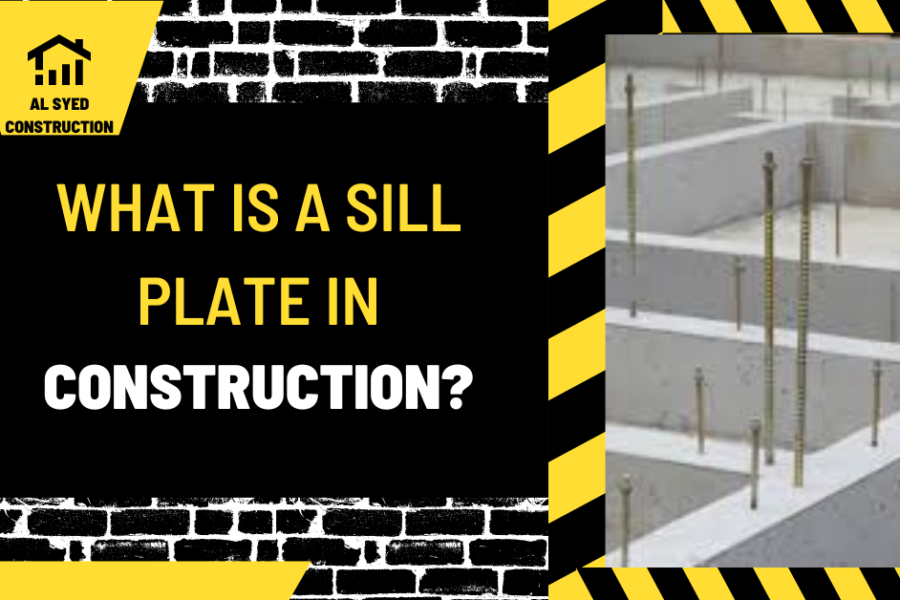What is a Sill Plate in Construction?
Table of Contents
Introduction
In the world of construction, every component plays a crucial role in ensuring the stability and longevity of a structure. One such component, often overlooked yet vital, is the sill plate. This article delves into the function, types, and importance of sill plates in construction.
Understanding Sill Plates
Definition
A sill plate, also known as a sole plate or mudsill, is a horizontal wooden or metal beam that is anchored to the top of the foundation wall. It serves as the base upon which the vertical components of a building, such as the walls and columns, are constructed.
Purpose and Function
The primary purpose of a sill plate is to distribute loads from the structure above to the foundation below, ensuring a stable and secure connection between the building and its foundation. It also acts as a barrier, preventing moisture from seeping into the wooden components of the structure, thereby reducing the risk of rot and termite damage.
Types of Sill Plates
Wooden Sill Plates
Traditionally, sill plates have been made from treated lumber, such as pressure-treated pine or fir, which is resistant to moisture and insects. Wooden sill plates are commonly used in residential construction due to their cost-effectiveness and ease of installation.
Metal Sill Plates
In commercial and industrial construction, metal sill plates, typically made of steel, are often used for their durability and strength. Metal sill plates are less susceptible to moisture and pests, making them a suitable choice for buildings with higher load requirements or in regions with harsher environmental conditions.
Installation and Anchoring
Anchoring Methods
Sill plates are anchored to the foundation using bolts or anchor straps. The anchoring method chosen depends on the type of foundation, the material of the sill plate, and local building codes. Proper anchoring is crucial to ensure the stability of the structure, especially in areas prone to seismic activity or high winds.
Sealing and Insulation
To prevent moisture ingress and improve energy efficiency, sill plates are often sealed with a waterproof membrane or gasket. Additionally, insulation can be applied between the sill plate and the foundation to reduce thermal bridging and enhance the overall energy performance of the building.
Maintenance and Repair
Regular Inspections
Regular inspections of sill plates are essential to detect any signs of moisture damage, rot, or pest infestation. Early detection and intervention can prevent more extensive and costly repairs in the future.
Repair and Replacement
If a sill plate is damaged, it may need to be repaired or replaced. This process can be complex, as it involves temporarily supporting the load-bearing components of the structure while the sill plate is removed and a new one is installed.
Conclusion
Sill plates are a fundamental component of construction, providing a crucial link between the foundation and the superstructure of a building. Understanding the types, installation, and maintenance of sill plates is essential for ensuring the stability and durability of any construction project.
FAQs
- What is the difference between a sill plate and a top plate?
- A sill plate is the bottom horizontal component of a wall system, anchored to the foundation, while a top plate is the upper horizontal component that ties together the vertical studs and supports the ceiling or roof structure.
- Can sill plates be made from materials other than wood or metal?
- While wood and metal are the most common materials, sill plates can also be made from composite materials or engineered lumber, depending on the specific requirements of the project and local building codes.
- How often should sill plates be inspected?
- It is recommended to inspect sill plates annually as part of regular building maintenance, or more frequently if there are signs of moisture issues or pest activity.
- What are the consequences of a failing sill plate?
- A failing sill plate can lead to structural instability, uneven settling of the building, and increased susceptibility to moisture and pest damage.
- Are there any special considerations for sill plates in earthquake-prone areas?
- In earthquake-prone areas, building codes may require additional anchoring and bracing measures to ensure that the sill plate and the structure above remain securely attached to the foundation during seismic events.




